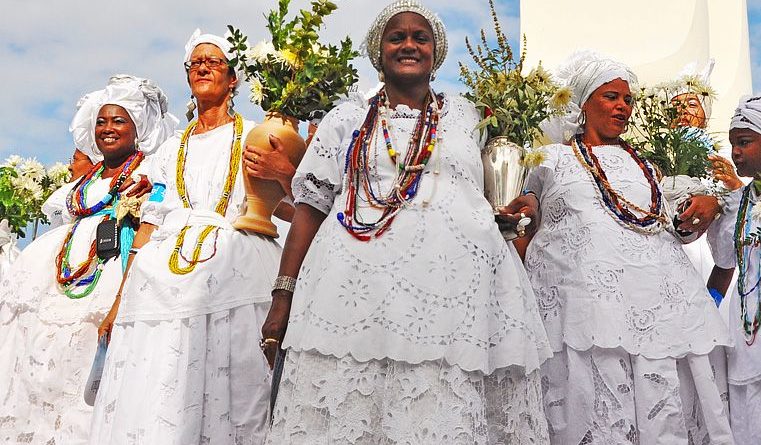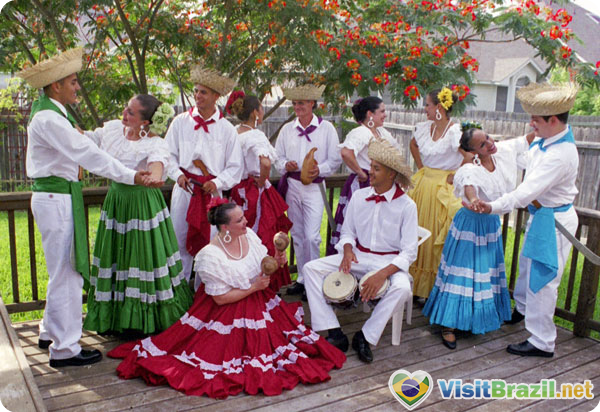Traditional Dress in Brazil
South America’s Brazil is a massive country. It has seen many different nationalities and civilizations over the years, all of whom have helped to shape the Brazilian culture into what it is today. There is no particular national costume as such in Brazil, rather a collection of traditional outfits from different parts of the expansive country. This traditional, or folk, clothing, helped to give people in the past a sense of identity and belonging. It represents one’s culture. It also usually represents one’s status within society, with the upper elite classes wearing very different attire to the peasant classes and rural communities.
There are other factors too that help to shape a country’s national dress – traditions, beliefs, ethnic groups, environment, weather conditions, and temperature. As these are so variable across Brazil, with many different landscapes, climates, beliefs, and ethnic groups, it therefore follows that there is a large diversity when looking at traditional outfits.
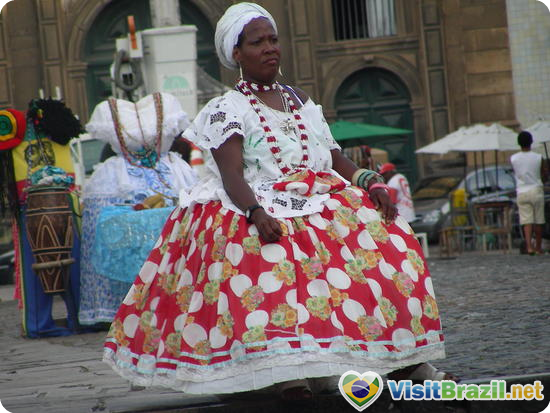
In general, Brazilian traditional dress is colourful, bright, vibrant, and highly decorated. Fabrics are typical lightweight and breathable due to the high temperatures, although, of course, in cooler mountainous areas heavier fabrics will be preferred. In rural areas, clothes used for working in the countryside will be durable and long lasting – practicality and longevity take precedence over fashion trends and modern styles.
Traditional attire can often still be seen today in the countryside areas. For example, Brazilian cowboys, known as gauchos, wear baggy pants, called bombachas, leather chaps, and wide brimmed sombrero hats. This is in contrast to the cowherds, known as vaqueiros, in the north eastern parts of the country, who wear a coat, a hat, and chaps. Due to the African influences in Bahia, many women adopt a similar kind of dress. This often involves a long, flowing, colourful skirt, made from a lightweight fabric, a colourful shawl, and a head wrap. Bright beaded accessories are worn with the costumes.
The traditional outfit have, in some case, undergone a modernisation process, with the wearer having decided to jazz up the traditional appearance. In this area, it has resulted in long dresses with long slits, and a highly ornate and embellished turban. Dresses and skirts made from a lace-like fabric come from the influence of Portuguese colonization.
Indigenous groups in the Amazon region used to paint their faces and wear a traditional tunic. Feathers and beads were commonly used for decoration. Whilst standards of dress are changing today, you may still see some communities who use this style of dress for everyday life.
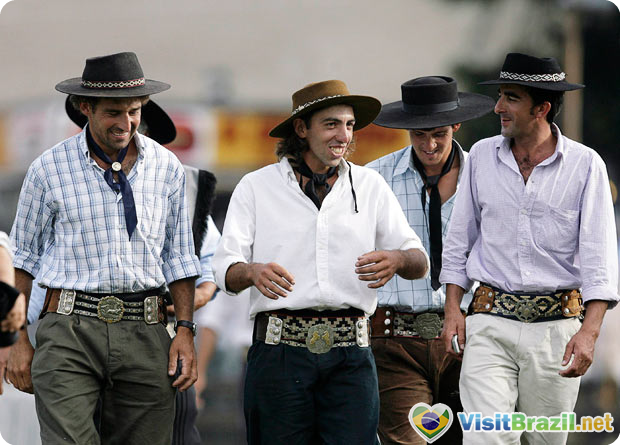
In Brazilian towns and cities, most people wear clothes as around most of the western world. Jeans and t-shirts are common casual attire. Ladies’ jeans are tight fitting. Females also often like to wear short dresses and skirts, usually in vibrant, striking, and eye-catching colours. In the business world, all people, male and female, take pride in looking professional and well turned out. Men often wear a dark coloured smart business suit, and women usually wear smart skirt or dress suits with high quality accessories. Hair, makeup and nails are often finished to perfection.
A very casual style is seen on the beaches. Brazil is famous the world over for females wearing thongs, or g-string bikinis. It is also known for men wearing the tight cut and revealing speedos. Bermuda style shorts and loose, flowing, lightweight, colourful tops are the normal cover ups.
Of course, no discussion of Brazilian clothing is complete without a mention of the elaborate and showy clothes seen during the famous carnival parades. These outfits, especially for females, are usually said to be ultra revealing and very provocative.
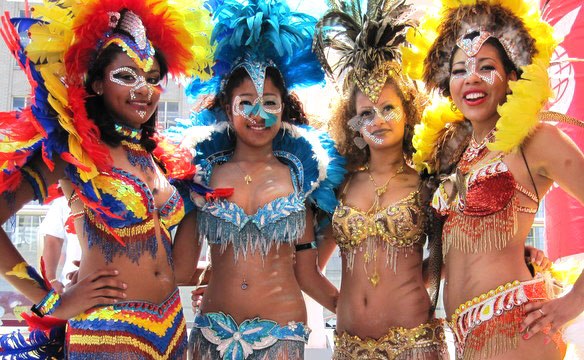
Women dance wearing skimpy bikinis, their bodies decorated with dazzling jewels and big feathers. Head pieces are also adorned with feathers and stones. Feather boas are another feature of carnival wear, as are beautiful and extravagant accessories and pieces of jewellery. Strings of beads are collected. Shoes have staggeringly high heels. Carnival would not be carnival though without such fancy, eye-catching, imagination-gripping, and memorable outfits. The clothing is part of what adds to the frenetic, electric, and wildly fun atmosphere during carnival.

